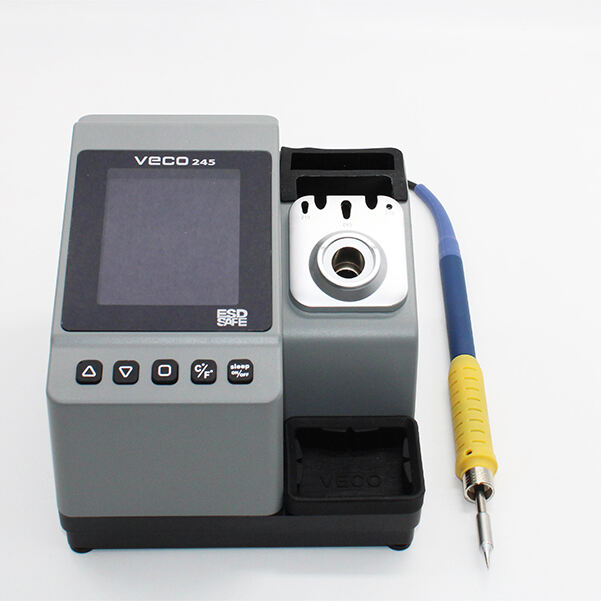Effective soldering hinges on precise temperature management, a critical factor for creating strong and reliable solder joints. Maintaining an ideal temperature range—typically between 350°C and 400°C—ensures sufficient heat application without compromising the integrity of sensitive components. This precision can mitigate the risks of cold joints and component overheating, both detrimental to soldering outcomes. Tools such as thermometers and thermal cameras can be instrumental in monitoring these temperatures accurately. Additionally, understanding the melting points of different solder types helps tailor temperature settings to specific applications, enhancing the precision of soldering iron usage in various tasks.
Flux plays a pivotal role in soldering by removing oxides and ensuring a seamless flow and adherence of solder. Different flux types—rosin, water-soluble, and no-clean—are suited to various applications. Selecting the right type enhances the quality of connections made with soldering wick. Proper application techniques are crucial; using brushes or syringes for controlled application minimizes overuse, promoting efficient cleaning. Furthermore, carefully selecting the appropriate flux can prevent residue build-up, thereby significantly improving joint longevity and reliability in electronic applications.
Proper ergonomics in soldering workstations are essential for reducing worker fatigue and improving precision, thereby maintaining workflow efficiency. Factors such as chair height, worktable position, and tool placement can influence comfort and productivity. Incorporating ergonomic soldering tools, including grip-friendly soldering irons and adjustable soldering stations, can significantly enhance user comfort. Additionally, regular breaks and stretching exercises help prevent repetitive stress injuries, sustaining a productive environment. Organizing the workspace to avoid time lost searching for tools further contributes to enhancing efficiency in soldering tasks.
The VECO-245 soldering station is engineered for precision with its PID temperature controller, ensuring accurate heat management for various soldering tasks. This feature is critical when working with delicate electronics where excess heat could cause component damage. The digital display of the VECO-245 allows users to monitor and adjust settings with ease, providing greater control and efficiency in soldering operations.

Customer reviews often highlight the VECO-245's reliability, emphasizing its ability to maintain optimal temperatures over extended use without fluctuations. This stability is crucial for professionals requiring consistent results in high-demand environments. Furthermore, the VECO-245 incorporates safety features like automatic shut-off, which protect both the user and the equipment, ensuring longevity and safety.
Portable soldering irons offer both convenience and performance, making them perfect for mobile technicians and hobbyists. These tools are known for their compactness and the inclusion of rechargeable batteries, which enhance their versatility for work in various locations and settings. Noteworthy features of many portable models include quick heat-up times and adaptable temperature settings, enabling users to tailor the iron’s performance to specific soldering tasks.

Feedback from users often points to the reliability of popular models, such as those from Weller and Hakko. These brands are praised for their ability to function effectively in confined spaces while maintaining operational efficiency. Their compact design does not compromise on performance, highlighting their practicality and effectiveness.
Advanced portable soldering units often incorporate safety measures like heat shields and automatic shut-offs to mitigate accident risks. These features are particularly valued in educational settings where safety is paramount. User feedback consistently emphasizes the importance of these safety protocols in enhancing both user confidence and equipment durability.

Models designed to monitor and regulate power consumption are not only crucial for prolonging device lifespan but also play a role in energy conservation. Selecting units with added tools, such as soldering wick and desoldering pumps, greatly increases the versatility of these portable solutions, making them suitable for a wide range of applications.
Cold joints are a common soldering issue, easily identifiable by their dull, matte appearance. To prevent forming cold joints, technicians should ensure both surfaces to be soldered are sufficiently heated, allowing the solder to flow evenly. Educating technicians on recognizing and preventing these mistakes can significantly improve soldering efficiency. Additionally, using high-quality solder is crucial to reducing the likelihood of cold joints, emphasizing the importance of selecting the right materials for a given task.
Overheating components during soldering can lead to severe damage and compromise device reliability. Implementing thermal management techniques, such as using heat sinks, can effectively control heat buildup. Monitoring time intervals during soldering sessions helps manage heat exposure, particularly for sensitive components. Regular training on thermal techniques enhances technician awareness and contributes to protecting components and extending their operational life.
Solder bridging is a soldering defect wherein solder accidentally connects two adjacent pads, potentially causing shorts in circuits. Causes often include excess solder, misalignment, and incorrect temperature settings, necessitating preventive strategies. Corrective measures involve using soldering wicks or desoldering pumps, underscoring the need for these tools to be readily available. Designing circuit boards with correct pad sizes and configurations further reduces the risk of unintentional connections, thereby ensuring safer soldering processes.
 Hot News
Hot News